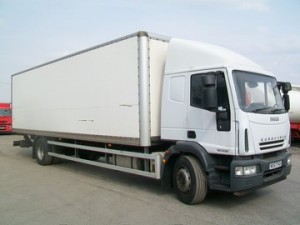(BLOG): Sealing technology investment deals in today’s economy is becoming tougher. So how, asks Mark Forrest of Trimble, do you convince decision makers of their strategic value?
In a recent survey 85% of field service managers said they consider the economic climate to be a major concern for business performance[1]. Businesses are, as a result, tightening budgets and being more cautious in their investment decisions, particularly when it comes to technology. Fleet management technologies, for example, are powerful management tools but convincing a board to invest is not an easy feat. Demonstrating the strategic value of technology, prior to investment, has therefore become increasingly important.
Choose the right technology and demonstrate strategic value
Pilot studies have gained traction as being a necessity in the decision making process. Typically lasting around three months, they are focused on demonstrating to the board the capabilities of a technology to effectively ‘test’ its performance before investing.
Information is collected through a pilot study typically consisting of three phases:
- Phase one – Baseline data is collected on how the fleet is currently performing. For example, if the technology picks up on a significant amount of speeding, idling, excessive fuel use, these are metrics which need to be monitored.
- Phase two – The improvement phase. The metrics are monitored through the technology to measure performance against predefined targets for improvement.
- Phase three – Offers additional improvement. Fleet operators can tighten the thresholds for those metrics or they have the option to include additional metrics.

Individual metrics that can be monitored and measured through fleet management technology, leading to significant benefits, are:
- Driver Safety– A leading security solutions provider rolled out driver safety technology as part of a pilot study for three months to measure the benefits across the business. A marked improvement was recognised with an 18.5% reduction in speeding tickets, a 50% reduction in speeding events and a 58% reduction in driver-caused collisions.
- Fuel consumption– Fleet management technology allows businesses to optimise schedules and route planning, helping to reduce unnecessary mileage and improve fuel efficiency. A leading animal welfare charity deployed fleet management technology as part of a pilot study and found the cost of engine idling to be at £255 (€300) per week. Following the pilot, the charity invested in a full technology roll out and now boasts an annual fuel saving of 80,000 litres through eliminating engine idling.
- Vehicle utilisation and productivity – Fleet management technology provides real-time visibility into the location of a vehicle which can help make more informed decisions in the planning and allocation of work across a fleet. Fleet managers are also able to pick up on any vehicles that are being under-utilised. A leading document destruction company deployed fleet management technology to increase efficiencies, generating 8% growth in the business, achieved without introducing any additional vehicles to the fleet.
- Vehicle and operating costs – Vehicle diagnostic solutions provide real-time data so information can be drawn directly from the vehicle, helping to improve vehicle maintenance by getting fault codes and alerts about engine difficulties before they become a major problem. Goodyear Dunlop estimate that tyres account for up to 20% of a car’s fuel efficiency, so keeping them in good condition can help control fuel expenses.
[1] Trimble’s ‘The Road Ahead – The Future of Field Service Delivery’ report, was carried out by Proteus, an independent market research agency, over April and May 2012 and involved in-depth telephone interviews with 100 managers and directors of businesses in the UK with field service departments across a variety of industries including communications (phone, cable and satellite), utilities, trade (HVAC, plumbing and electrical) and waste management.
The author is Mark Forrest, general manager of Trimble’s Field Service Management (FSM) division.










